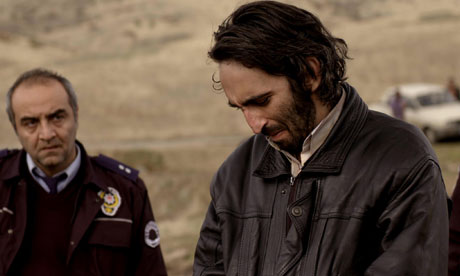
Turkish film-maker Nuri Bilge Ceylan initially trained as an electrical engineer and worked as a commercial photographer until becoming a full-time director. Now in his early 50s, he's one of the most significant moviemakers to have emerged this century, an original figure in his own right and a major force in reviving a belief in the kind of serious, ambitious, morally concerned European art-house cinema that was taken to new heights by Bergman, Tarkovsky, Antonioni and Angelopoulos in the 1960s and 70s.
In the films that established his reputation – Uzak, Climates and Three Monkeys – Ceylan used pared-down narratives with long takes and sparse dialogue to explore the ethical dilemmas of middle-class Turks, studying the social and geographical contexts of their personal lives and the larger world that is shaping them. There is always, however, a mystery about his characters. This derives in part because Ceylan refuses to provide intrusive exposition. More significantly, it arises from his generous invitation to audiences to make up their own minds about what they are seeing.
His finest work to date, Once Upon a Time in Anatolia, is a carefully controlled masterpiece. As the title suggests, it's a sort of fable with a very specific location in the Asian part of his native land. It's also (and the title inevitably evokes Leone's two violent classics) an exercise in popular genre cinema, in this case the crime scene investigation picture. The themes are universal and it could be reworked without much difficulty on the steppes of Russia, in the hill country of Texas or the desert of Rajasthan – anywhere where people get casually killed and other people come together to tidy up the mess.
A brief pre-credit sequence shows three men drinking at night in a dilapidated garage on the edge of a town. They are, as it gradually transpires, the perps and their victim. After the credits have rolled, three vehicles – two battered saloons and a military-style Jeep – snake their way across a bare, rolling landscape at night, their smallness and vulnerability emphasised by the widescreen. They stop beside the road and some of the passengers step out, two of them handcuffed. We might guess they're a band of mafiosi about to kill and bury some transgressor. In fact, the reverse proves to be the case. The handcuffed men are murder suspects accompanied by the police, a quartet of paramilitary gendarmes, a couple of gravediggers, a public prosecutor and a local doctor. They've confessed to their crime and are being brought to the countryside to locate the place where their victim is buried.
A body is needed to complete the investigation and it is supposedly to be found near a fountain beside a bridge not far from a lone tree situated a little further from the road. It's as if Vladimir and Estragon were accused of killing Pozzo or Lucky. But the chief suspect, Kenan, cannot or will not identify the place and for most of the film the characters are literally and figuratively in the dark as they drive around the frozen wintry heath.
At first, the dozen all-male characters are anonymous, obscure figures. But as they bicker and banter about getting the routine job done and going home, they become individuals with hopes and fears and part of a contested hierarchy. Naci, the police chief, burns on a short fuse and has a sick child in need of constant medication. His driver, nicknamed Arab Ali, has a passion for food. The sergeant of the gendarmerie wants official credit for his role in the search. Prosecutor Nusret wears a smart overcoat, white shirt and tie and a decent suit and needs to get back to Ankara without getting caught up in any serious breaches of protocol.
He's a vain man, identifying the corpse when it's eventually exhumed as looking like Clark Gable and recalling that as a university student he was nicknamed "Clark". His constant urination leads the cops to suspect he has prostate trouble. Doctor Cemal turns out to be a city man, once married to a beautiful woman, childless, sceptical, observant, thoughtful. Keeping his own counsel, and possibly a larger keeper of consciences, he meditates on fate and the significance of individuals in the larger scheme of things. Cemal resembles Anton Chekhov and doctors in Chekhov's work. All this is revealed gradually, subtly, as if we were there in the community.
Along the way, we learn about corruption, neglect, inefficiency. The gravediggers haven't brought a pick. No one has remembered to take a body bag. The police cars are poorly maintained. The driver doesn't have a map. When they put in for a rest at a village to get tea from the mayor, the electricity fails and we discover no official has visited this place for years. Yet it is there that the suspects have an epiphanous encounter with the mayor's daughter that provides the investigation with a major gear change.
The visit to the countryside is beautifully lit by Ceylan's regular cameraman, Gökhan Tiryaki, and has a resonant soundtrack of natural noise ranging from wind in the trees to overweight coppers in creaking car seats. It's followed by a lengthy coda back in the small town where the killing occurred and an autopsy takes place. Here, the doctor emerges as the dominant figure. But daylight brings not an expected clarity but further obfuscation. The case appears to have greater complexities than we'd supposed and we realise we've been watching a thriller as challenging as Antonioni's Blow-Up and Haneke's Hidden. As a character casually observes early on, we might remember this seemingly insignificant evening later in life as an anecdote that begins: "Once upon a time in Anatolia…"

